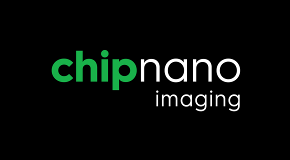
|

|

|

|

|

|

|
Project NanoVision Consortium
Chip NanoImaging AS (CNI), NorwayChip NanoImaging develops photonic-chip based super-resolution microscopy, i.e., microscopy techniques that make it possible to see details smaller than what can be seen using standard optical microscopes. Jon Kristian Hagene is the CEO of CNI and has over 30 years exposure on product development, innovation and starting spin-off. The inventor of the on-chip nanoscopy (Prof. Balpreet S Ahluwalia, PhD) and the technology driver (Øystein Helle, PhD) are the co-founders of CNI and thus have a strong motivation to bring the technology invented in their lab to the market. The creation of spin-off was triggered in Oct 2019 based on ERC Proof of Concept (PoC) project. CNI has an international team who are highly skilled in the field of microscopy, photonics, nanotechnology, microbiology, and innovators with entrepreneurship experience. CNI is co-operating with Norsk Elektro Optikk AS (NEO) as a partner in the technical development, commercialization, and management. NEO was established in 1985 and is the largest independent research and development organization in electro-optics in Norway and has established itself as a reputed manufacturer of advanced electro optical products for an international market. CNI slogan "Explore, Discover, Improve Life.", that is literary to explore life and make new discoveries to improve life, is almost met. 
Role in the project: CNI is the hosting the EIC-Transition project. CNI is involved in overall management of the NanoVision project, development of the prototype, performing user-testing and dissemination, communication, and exploitation activities.
UiT, The Arctic University of NorwayUiT is the northernmost university of the world, located at the edge of the Arctic. The university hosts 15,800 students and 3400 employees. UiT has a national responsibility for, and strong traditions with research and education in the Arctic. UiT's research strategy naturally covers many aspects of the Arctic where UiT either is or has the potential to become internationally leading. These aspects include effects of changes in climate and environment and sustainable use of resources. The university is an important driving force and a central actor in research and international collaboration in and for the Arctic region. The Department of Physics and Technology has four research directions with corresponding master programmes: space physics, electrical engineering, energy and climate and earth observation. This project is hosted by the optical nanoscopy research group that consists of 2 academic professors including Professor Balpreet Singh Ahluwalia (The PI of NanoVision project), and 20+ researchers, engineers and post-doctoral research fellows and PhD students . The group is cross-disciplinary with team members possessing complementary skills in the area of microscopy, nanoscopy, integrated optics, bioimaging, and cell biology. The Department of Computer Science has research groups on Computational Analytics & Intelligence (CAI), Health informatics and technology (HIT), High Performance Distributed Systems (HPDS), Open Distributed Systems (ODS), Information Access (IA) and Arctic Green Computing.
Role in the project: Development of bio-imaging
applications and the development of AI suite. The two
research groups from UiT are:
European Molecular Biological Laboratory (EMBL), Heidelberg, GermanyEMBL is Europe's flagship laboratory for the life sciences - an intergovernmental organization representing 27 member states and more than 110 independent research groups covering the spectrum of molecular biology. EMBL service teams covers the spectrum of molecular biology at six sites in Barcelona, Grenoble, Hamburg, Heidelberg, EMBL-EBI Hinxton, and Rome. In this project EMBL, Heidelberg is co-operating within Cell Biology and Biophysics research group. Recently, EMBL has started large scale "Imaging Centre" which is Europe's one-stop-shop of all imaging needs, covering both the state-of-the-art, and under-development cutting edge microscopy solution such as offered by NanoVision. The microscopy facility at EMBL attracts over 350 users/year for microscopy applications. This enables NanoVision to make our technology accessible to a large scientific community with diverse biological & life science needs. Dr. Rainer Pepperkok, Director Imaging Facility, EMBL, Heidelberg is the lead PI from EMBL. Role in the project: During the NanoVision project, EMBL will contribute to field-testing of the chip-based nanoscopy setup build by Chip NanoImaging AS. 12 months long user-testing is planned. EMBL will also contribute dissemination, communication, and user survey.
Karolinska Institutet (KI), Stockholm, SwedenKarolinska Institutet is one of the world's leading medical universities. Karolinska Institutet accounts for the single largest share of all academic medical research conducted in Sweden and offers the country's broadest range of education in medicine and health sciences. The Nobel Assembly at Karolinska Institutet selects the Nobel laureates in Physiology or Medicine. Within Karlolinska Institutet, the Department of Clinical Science, Intervention and Technology - CLINTEC is participating in this project. The Department of Clinical Science, Intervention and Technology (CLINTEC) consists of 15 Divisions. Within CLINTEC, this project is within Division of Obstetrics and Gynaecology which is led by Professor Ganesh Acharya, who is the lead PI from KI in this project. Division of Obstetrics and Gynaecology has 6 research groups (more than 30 employees and several affiliated researchers), 3 full Professors, 5 Associate Professors and 2 Assistant Professors are actively working in the field of embryology and developmental biology, fertility preservation and reproductive toxicology, stem cell biology, translational reproductive medicine, experimental fetal medicine, placental biology, imaging and clinical obstetrics and gynecology. Clinical Science, Intervention and Technology are fundamental for the interface to academic medicine and health care. History demonstrates that breakthrough research is often hard to predict. However, a strong interface between academia and healthcare is essential and enables new better and more efficient treatment for patients. CLINTEC enables a close co-operation between different stakeholders. Role in the project: KI will be involved in the user testing on the histopathology samples. KI will also contribute towards the user survey and feedback. |



